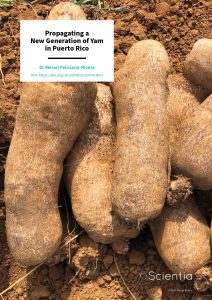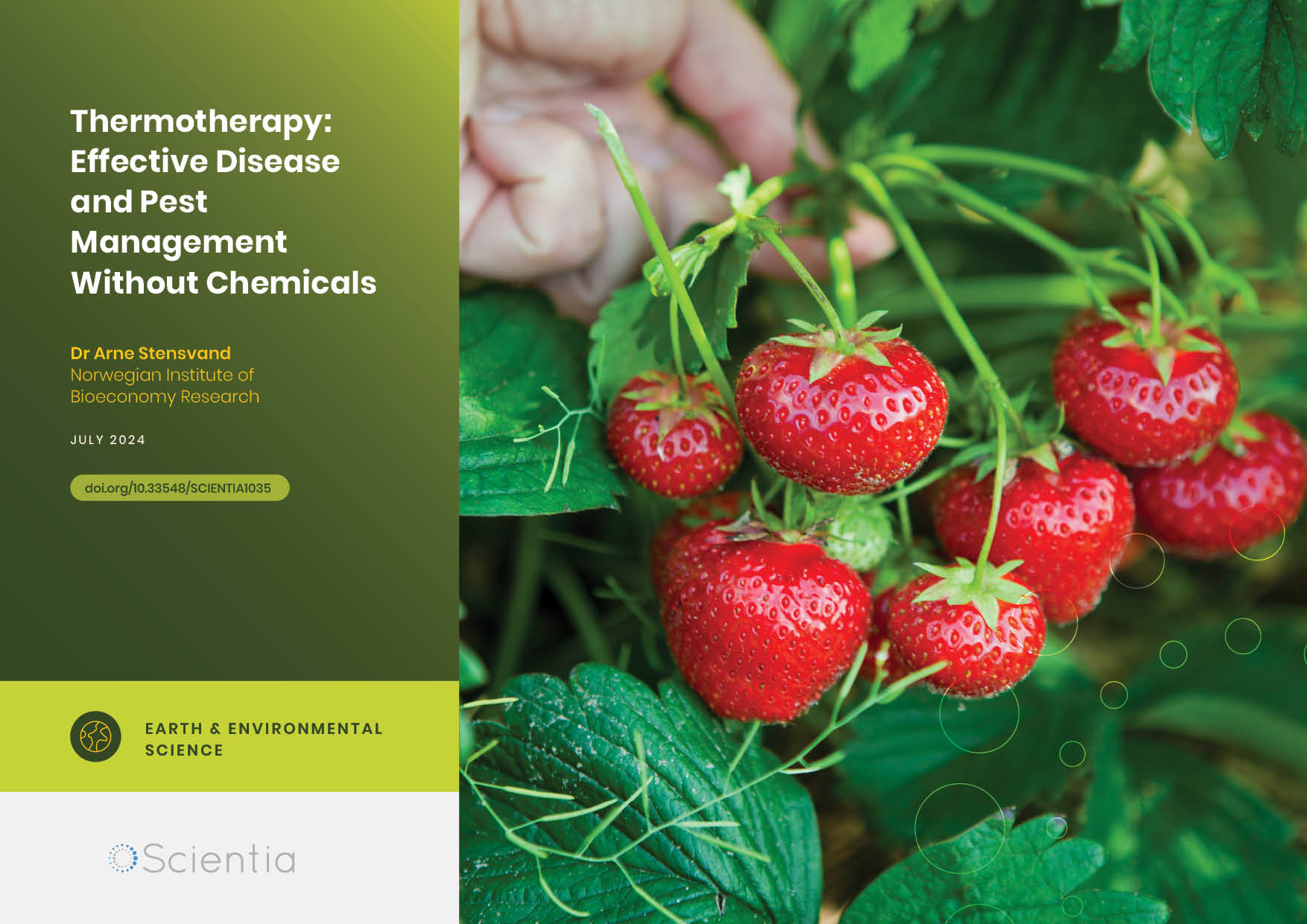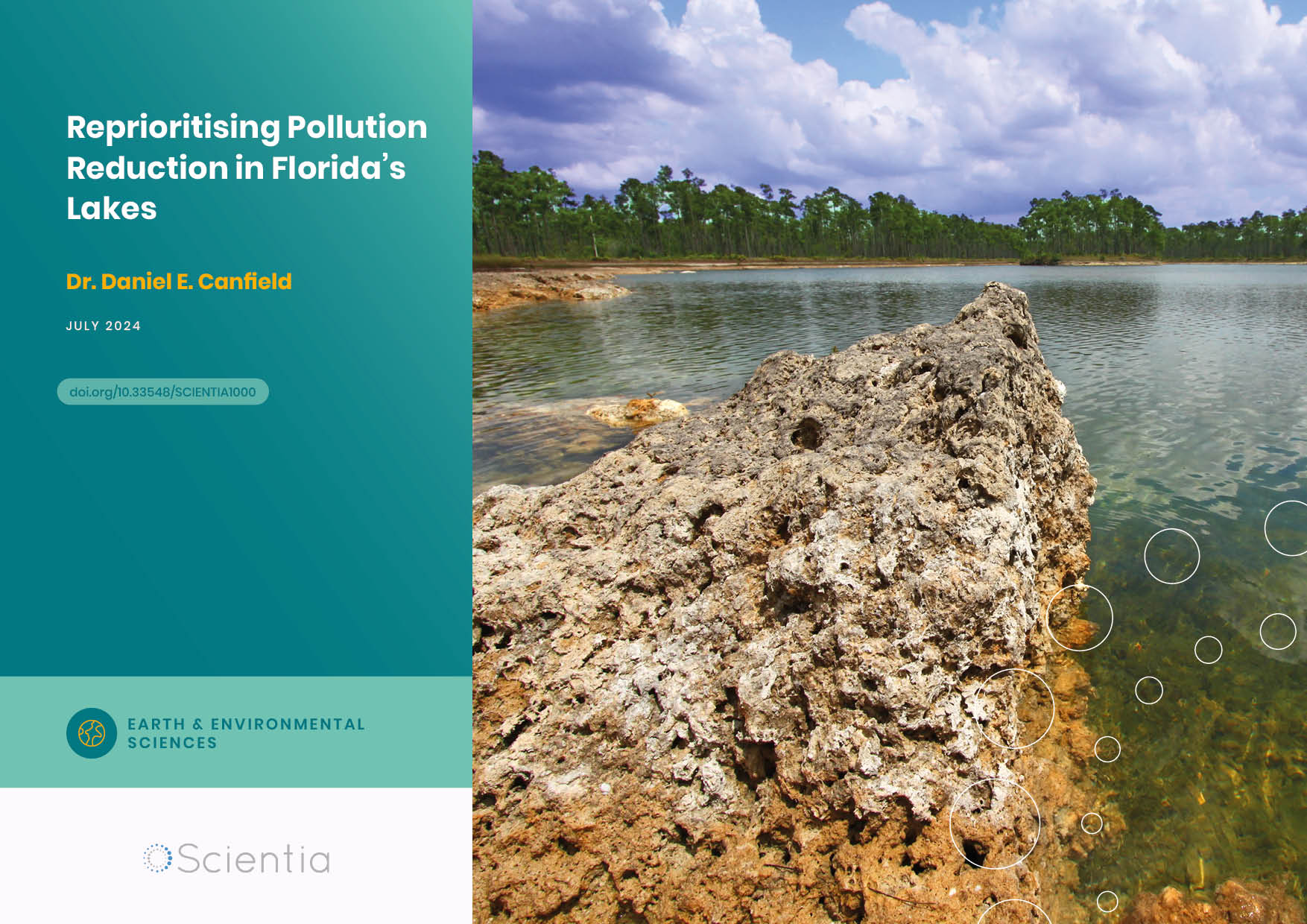Dr Merari Feliciano-Rivera | Propagating a New Generation of Yam in Puerto Rico
Yams are an essential nutritional crop in Puerto Rico, but unfortunately, years of poor management have left farmers with a lack of good-quality seeds from which to grow new plants. Dr Merari Feliciano-Rivera from the University of Puerto Rico at Mayagüez has been working with a team of scientists and students to address this problem and propagate a new generation of disease-free seeds.
Why Is the Yam so Important?
As an island in the Caribbean, Puerto Rico is particularly vulnerable to adverse weather events such as hurricanes. In 2017, the Island suffered its worst-ever natural disaster when it was hit by Hurricane Maria, which killed nearly 3,000 people. After this devastation, Puerto Rico faced the secondary problems of providing housing, medical aid, and food to the population. Many of the crops grown on the Island had been wiped out, and transport links were erratic, meaning that food shortages rapidly became an issue.
As an underground crop that grows ‘tubers’ much like potatoes, the yams grown in Puerto Rico were less affected by the disaster than other crops and provided a vital nutrition source for many islanders during recovery after the hurricane. Yams are high in fibre, vitamin C, and other nutrients vital to humans and play an important role in the everyday diet of many Puerto Ricans.
Although Puerto Rico imports over 80% of its yams, there is scope to grow more of their own and, in doing so, work towards becoming self-sufficient. The factors currently limiting the amount of yam production include:
- High production costs.
- The low availability of high-
quality seeds. - The prevalence of diseases that affect these underground crops.
The Need for Yam Seed
Dr Merari Feliciano-Rivera from the University of Puerto Rico at Mayagüez is leading a team of scientists trying to solve some of the problems facing yam production in Puerto Rico. The most common method of propagating new yam plants is by taking small tuber material or tuber sections from existing yam plants and growing them into new ones. This is called vegetative propagation. However, when used on a commercial scale, such as a yam farm, problems can arise. When a plant of poor quality is propagated, it generally means that all the plants will be of poor quality and, therefore, much more susceptible to disease. Poor-quality plants also produce smaller and fewer yams. Furthermore, if the original plant is harbouring a disease, the entire crop will also be much more likely to develop that disease, which can lead to the complete failure of the crop.
How Else Can a Yam Grow?
Dr Feliciano-Rivera and her colleagues have been looking into alternative ways to propagate yams to grow healthy, disease-free plants and seeds. Under laboratory conditions, it is possible to take small disease-free explants from yam mother plants unaffected by any disease and grow them into healthy adult plants, using sterile conditions and the application of plant nutrients and hormones to stimulate growth. Using tissue culture technology, a small explant from one plant can be multiplied into hundreds or thousands of adult plants.
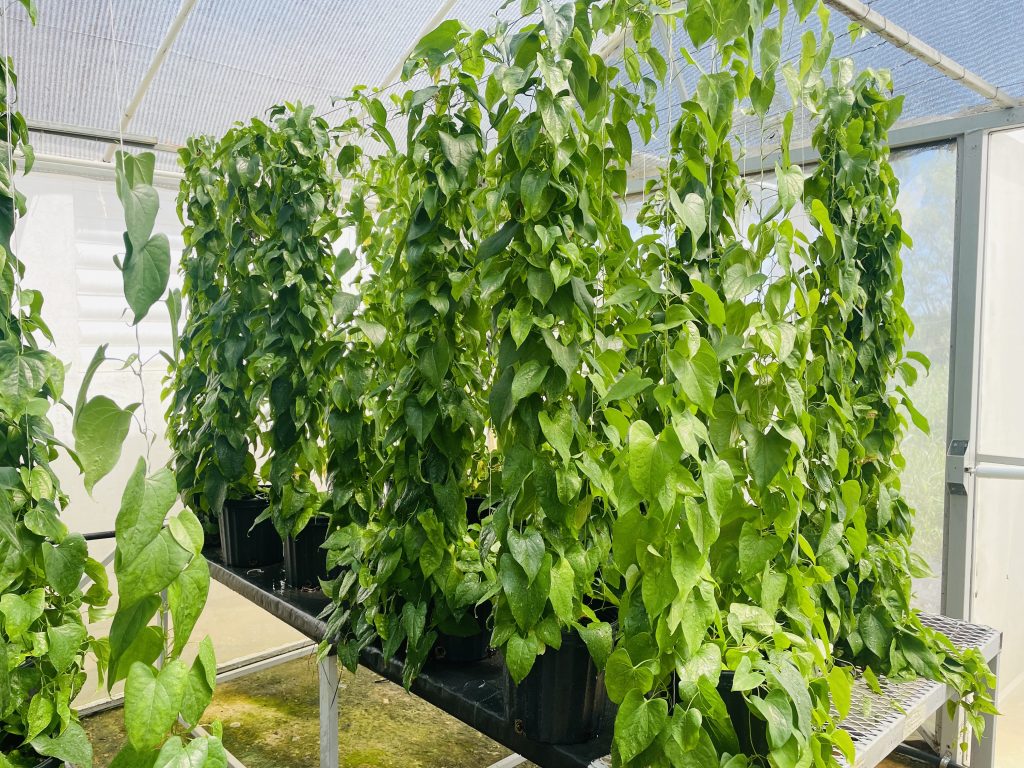
Credits: Merari Rivera
Can Technology Save the Yam?
Dr Feliciano-Rivera’s team used an advanced tissue culture technology, where plants are intermittently immersed in a nutrient solution known as Temporary Immersion Bioreactor System (TIBS). This system holds the sterile plant material and periodically immerses it into nutrient-rich liquid at a rate set by the scientists. The nutrients stimulate the plants to grow, and when large enough, the plants can be removed and eventually grown in regular soil or compost. It is a more productive way to grow plant material than the older micropropagation method of placing the plantlets onto a solid jelly-like material containing the nutrients and leaving them to grow.
The experimental findings have been encouraging. Dr Feliciano-Rivera’s team found that by using this propagation system, they were able to produce more vigorous plants and disease-free yam seeds of a higher quality than those grown on solid media and conventional propagation systems.
TIBS is faster and has a higher multiplication rate (meaning it can produce more plants more quickly). The experiments have revealed the best timings, temperatures, and nutritional mixtures needed to produce healthy yam plantlets in the laboratory. The team is now working on producing disease-free yam seed for local farmers using the temporary immersion bioreactor system and, excitingly, is moving forward to the next phase of their project focused on the importance of yams in food security on the Island.
What’s Next for the Yam?
Dr Feliciano-Rivera and her colleagues now hope to scale up the production of disease-free yam plants so that good-quality seeds can be produced and distributed to farmers in Puerto Rico. They are also investigating new protocols for the harvest and storage of the yam crop to help avoid losses caused by diseases that affect the crop after they have been harvested, such as fungal and nematode infections. They hope that introducing the new healthy seeds and better storage methods can increase the production of this vital nutritional crop and help the Island become more self-sufficient.
The team will also implement a training program for local farmers, including education about yam growth, harvest, nutrition, and identifying and managing diseases. This should help ensure that Puerto Rico’s yam is of better quality in the hands of our farmers. In turn, this will increase the resilience of the Puerto Rican people to deal with natural disasters, which are becoming ever more frequent due to global climate change. The yam will be safe in the hands of the experts working hard to save it and in the hands of our farmers.
SHARE
DOWNLOAD E-BOOK
REFERENCE
https://doi.org/10.33548/SCIENTIA1003
MEET THE RESEARCHER
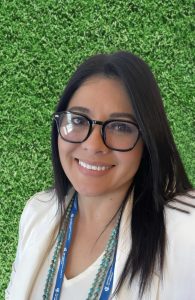
Dr Merari Feliciano-Rivera
College of Agricultural Sciences
University of Puerto Rico, Mayagüez Campus
Puerto Rico
Dr Merari Feliciano-Riviera graduated from the University of Puerto Rico with a BS in Agricultural Education and an MS in Crop Protection. After gaining a Lyman T. Johnson scholarship, she studied for her PhD in Plant pathology at the University of Kentucky, USA, which she completed in 2011. Dr Feliciano-Riviera is currently a professor at the University of Puerto Rico, where she teaches undergraduate and graduate students about plant pathology, biotechnology, and molecular plant pathology. She also served as a University Senator from 2021 to 2022 and has been the mentor of undergraduate and graduate students on several research projects. She has received millions of dollars in several grants funded by the US Department of Agriculture to develop a research programme focused on disease management of various pests and diseases common in Puerto Rican crops. Dr Feliciano-Riviera is also the Principal Investigator at the Biotechnology and Plant Pathology Lab of the Agricultural Experiment Station of Isabela, PR. She has been honoured with several awards for her scientific presentations at national conferences.
CONTACT
W: www.researchgate.net/profile/Merari-Feliciano-Rivera
KEY COLLABORATORS
Mildred Cortés, PhD, University of Puerto Rico, Mayagüez Campus
Yanira Miranda-Cortés, MS, Research Technician, University of Puerto Rico, Mayagüez Campus
Jesús M. Cardona, University of Puerto Rico
Martha C. Giraldo Zapata, PhD, University of Puerto Rico
Agenol González Vélez, MS, University of Puerto Rico
FUNDING
This work is supported by the USDA National Institute of Food and Agriculture, Hatch project 7001527.
FURTHER READING
YM Cortés, Evaluación de métodos de propagación de Dioscorea spp. para aumentar la disponibilidad de semilla libre de enfermedades [Evaluation of propagation methods of Dioscorea spp. to increase the availability of disease-free seed], Master’s thesis, 2019, University of Puerto Rico, Mayagüez campus.
S Fuentes-Aponte, M Feliciano-Rivera, LI Rivera-Vargas, A González-Vélez, First report of Colletotrichum alatae on water yam (Dioscorea alata) causing leaf anthracnose in Puerto Rico. The Journal of Agriculture of the University of Puerto Rico, 2021, 105 (2), 269–271. DOI: https://doi.org/10.46429/jaupr.v105i2.20087
M Feliciano-Rivera, Towards Sustainable Yam Production in Puerto Rico. Scientia, E-book, 2018. DOI: https://doi.org/10.26320/SCIENTIA265
-web-resources/image/Headshot_IMG_8555_Original.png)

REPUBLISH OUR ARTICLES
We encourage all formats of sharing and republishing of our articles. Whether you want to host on your website, publication or blog, we welcome this. Find out more
Creative Commons Licence (CC BY 4.0)
This work is licensed under a Creative Commons Attribution 4.0 International License. 
What does this mean?
Share: You can copy and redistribute the material in any medium or format
Adapt: You can change, and build upon the material for any purpose, even commercially.
Credit: You must give appropriate credit, provide a link to the license, and indicate if changes were made.
SUBSCRIBE NOW
Follow Us
MORE ARTICLES YOU MAY LIKE
Dr Robert Larkin | Cultivating Change to Improve Soil Health and Increase Potato Yield
Environmental quality and food production are facing the pressing challenges of climate change and global population growth. Dr Robert Larkin from the United States Department of Agriculture-Agricultural Research Service (USDA-ARS) and a team of plant scientists developed and tested a range of crop management systems to help overcome these compounding challenges. Their work is improving soil health and increasing the yield of potato crops, contributing to the future food security of nations.
Dr Arne Stensvand | Thermotherapy: Effective Disease and Pest Management Without Chemicals
Dr Arne Stensvand and his team at the Norwegian Institute of Bioeconomy Research are developing physical methods of pest reduction in plants. The team is specifically interested in strawberry plants, for which pest management is vital for crop success. They are pioneering thermotherapy as a heat treatment method to provide an environmentally effective and economically sound non-chemical approach to pest management.
Dr. Daniel Canfield | Reprioritising Pollution Reduction in Florida’s Lakes
Florida’s landscape is dotted with thousands of lakes that reflect regional geology, topography and anthropogenic activities. Phosphorus and nitrogen are critical nutrients for maintaining the wide range of biological production expressed across Florida, but excessive inputs of these nutrients due to past human activities impair many waters. There has been a long history of work aiming to address associated water quality pressures, and Dr. Daniel Canfield at the University of Florida has been at the centre of these efforts for over 40 years. Now, with the correction of point-source nutrient inputs, Dr. Canfield proposes that holistic lake management, including the integration of in-lake management strategies with a focus on organic sediment removal, should be much more prominent on the US government’s agenda to provide faster restoration of stakeholders’ lake usability.
Dr Jon Tore Lieng | Dynamically Installed Anchors for Floating Offshore Turbines
Effectively harnessing offshore wind presents a valuable opportunity to increase energy supplies. Floating wind turbines present several advantages over traditional fixed turbines in more shallow waters. Dr Jon Tore Lieng from Deep Sea Anchors and colleagues have developed a type of dynamically installed anchor to hold the structures in place while reducing both the costs and complexity associated with installation where cohesive seabed sediments are realised.

